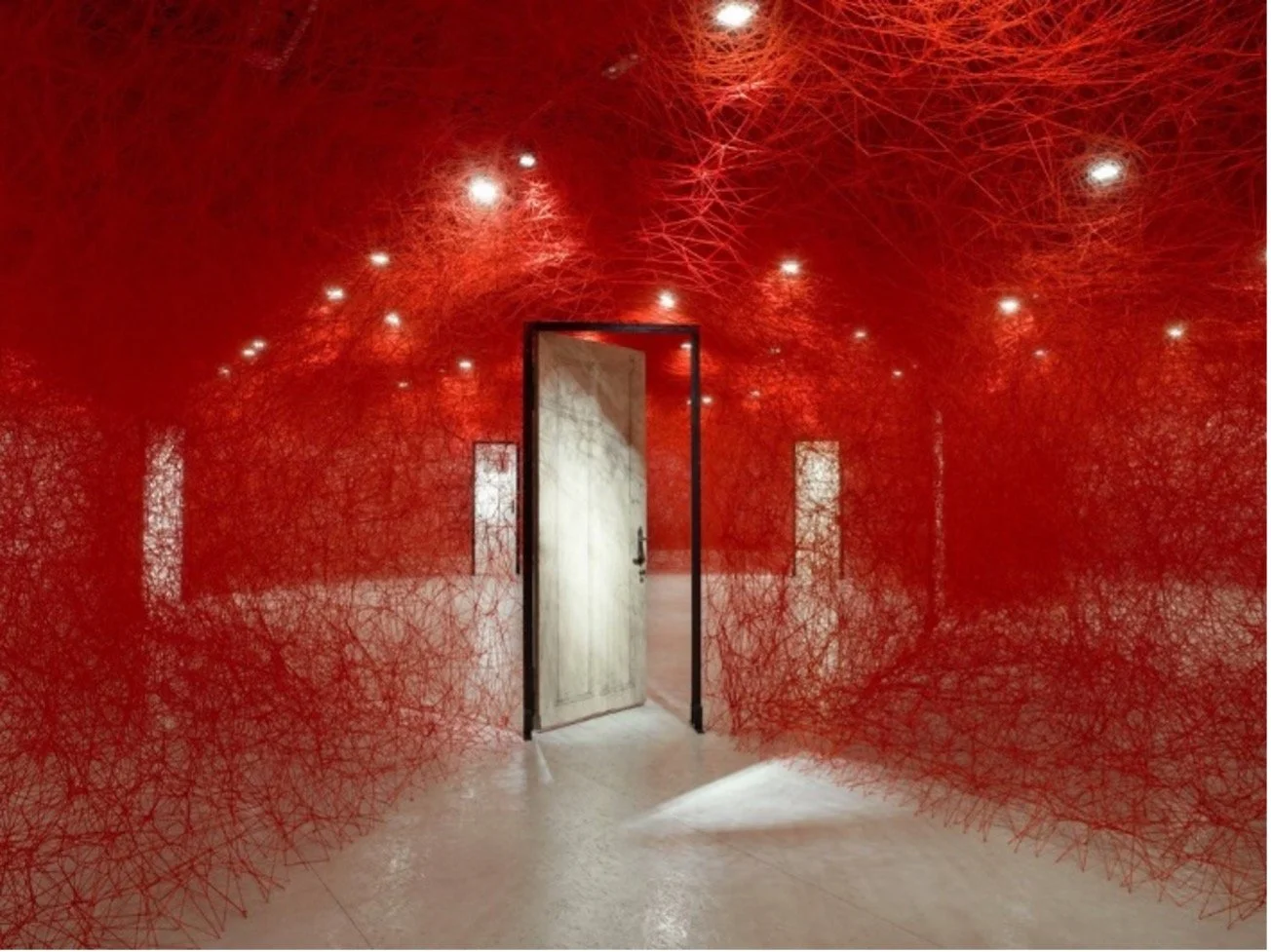Putting life into the pattern by Michaela Hall…
Patterns are everywhere, in the textures of our clothes, in the tiles in our kitchens, and in the designs of our wallpapers. More widely in the creative world though, the pattern has been used by thousands of artists to create complex compositions, rhythm, and a guide for the viewer’s eye. When we think of patterns in art we think of stripes, optical illusions, painterly textures, and textile designs. What we perhaps don’t think of as much is installation and sculpture, patterns in the three-dimensional and living form that forms an environment in which pattern is brought to life and we can experience each element both separately or together as a viewer.
One artist who embraces this is Japanese-born Chiharu Shiota. Shiota is internationally renowned for creating her impressive large-scale installations that provide a space for the viewer to explore new and unknown environments while contemplating the big questions around life, existence, and death. In ‘Tracing Boundaries’ (2021) Shiota creates a tunneled environment within a typical gallery space that consists of weaving webs of bright red wool. The five doors that allow the viewer to journey through the space act as a portal in transporting them into a completely new environment where delicate, yet confrontational webbed patterns surround them. The environment is an example of how the patterns can be experienced in many different ways by the viewer, depending on their chosen walkway, height, angle, and so forth. The pattern in motion.
Another artist who exemplifies pattern and texture is American-born Sarah Sze. Sze is famous for her explosively busy and multidimensional works that challenge the boundaries of painting, sculpture, installation, and digital media. Her works are often an attack on the senses, with lots going on, and are full of different patterns in terms of reflections on the wall, textured patterns in the diverse materials used, and moving light and shadow. In ‘Image in Debris’ (2018) mirrors, wood, stainless steel, archival prints, projectors, lamps, desks, stools, ladders stone, and acrylic paint all work together to create a kaleidoscope-esque atmosphere in the room where the viewer can find more detail, texture, and pattern in different ways as they explore the environment. The projectors and mirrors also help to distort the scale of the room and the installation feels more like a living pattern or hallucination than a white cube gallery space. Similar to Shiota, this gives the viewer an experience that can be very personal depending on the route taken and the elements focused on.
It’s no doubt that the two artists here have two different approaches toward pattern and texture. While Shiota focuses on working with one material to create a new environment, Sze focuses on combining as many different materials and techniques as possible to create hers. However, what both artists do in harmony is bring pattern and texture to the forefront in ways that aren’t traditional in the art world – through materials that we see every day like wool, wood, and mirrors. Their works both demonstrate that pattern is really in every day and everywhere we look and reframing materials in a certain way gets us to pay more attention to what is really around us and the environment we’re in. This distortion of our real environment into something like these spaces puts vibrant life into a pattern and I’m sure – makes us all pay more attention to what patterns we passively miss day to day.


